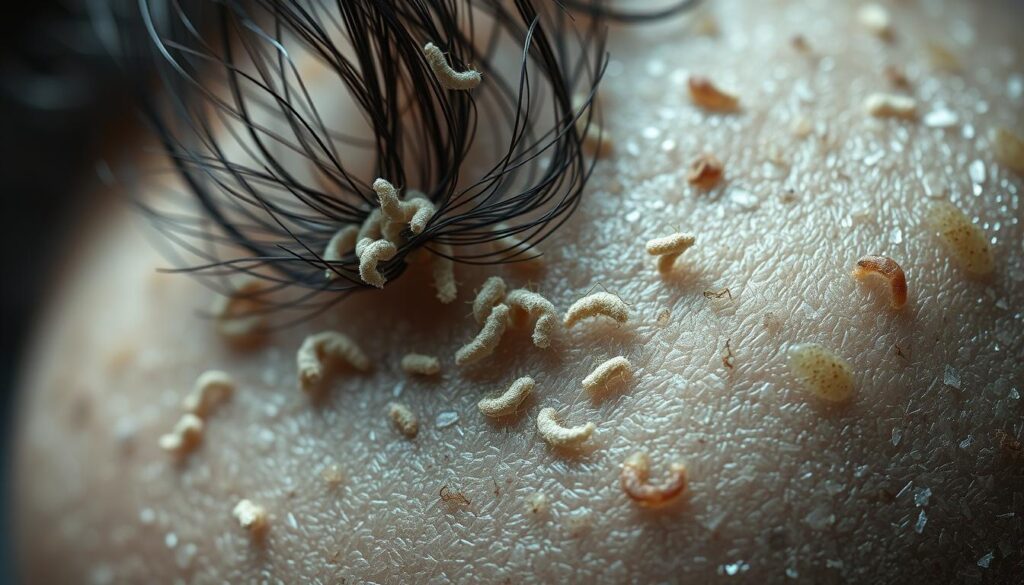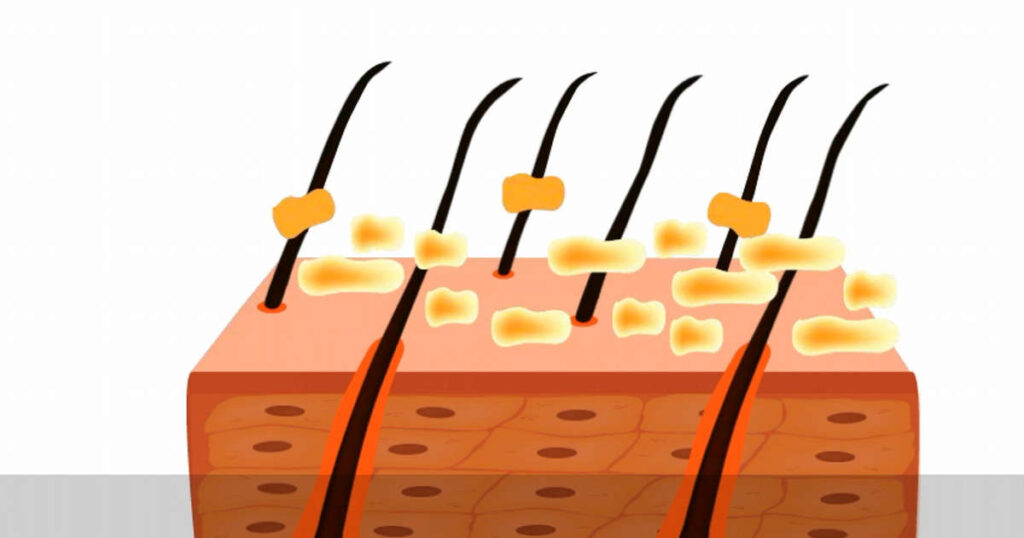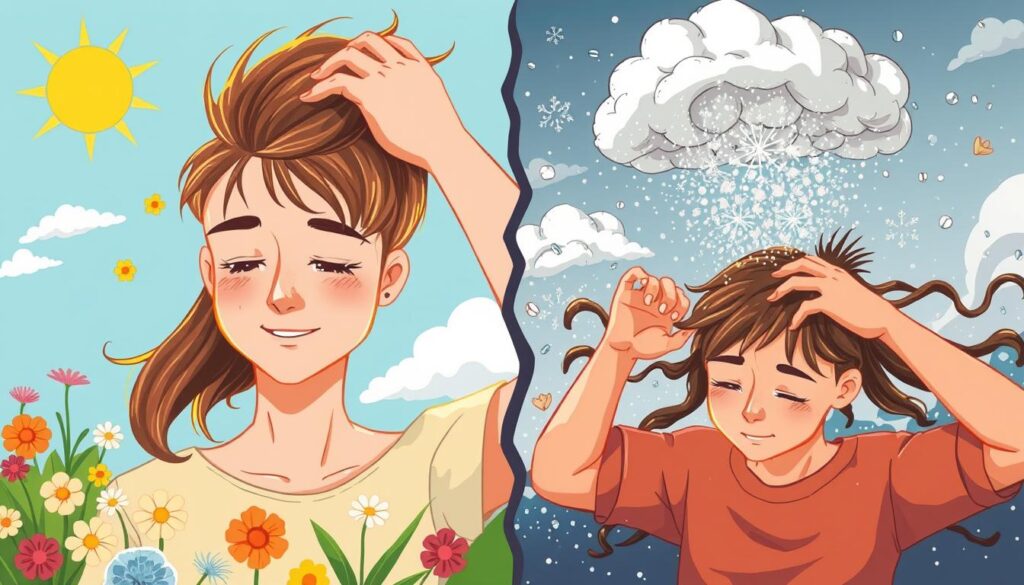Contents
Ever wondered why those pesky white flakes keep coming back, no matter what you do? You’re not alone. Dandruff is a common scalp condition that affects millions of Americans, as reported by the Mayo Clinic. But with so many myths floating around, it’s hard to know what’s true and what’s not. Are you ready to uncover the truth behind dandruff myths and finally get the facts straight?
I’m here to debunk the most common dandruff myths and shed light on scalp health. From washing habits to oil treatments, we’ll explore the truth behind these misconceptions. By the end of this article, you’ll have a clear understanding of how to effectively manage your scalp health and say goodbye to those stubborn flakes.
Let’s dive into the world of dandruff myths and separate fact from fiction. We’ll explore why some popular beliefs about scalp care might be holding you back from achieving a healthy, flake-free scalp. Get ready to challenge what you thought you knew about dandruff and discover evidence-based solutions for better scalp health.
Summary
- Dandruff affects millions of Americans and is not caused by poor hygiene
- Washing hair 2-3 times a week is often sufficient for most people
- Gentle, sulfate-free shampoos can help balance scalp oils
- Excessive brushing and heat styling can irritate the scalp
- Hair doesn’t “get used to” shampoo; changing needs are due to various factors
- Proper hydration is crucial for all hair types to prevent damage
- Consistent use of botanical-based products can promote healthier hair and scalp
Understanding Dandruff: Causes and Symptoms
Dandruff is a common scalp condition that many people face. It’s often not well understood. Let’s explore what causes dandruff and how to recognize its symptoms.
The Role of Malassezia Yeast in Dandruff
Dandruff isn’t from a dry scalp. It’s linked to an oily scalp and a yeast called Malassezia. This yeast is normal on our scalps. But, too much of it can cause skin cells to turn over fast. This leads to the white flakes we call dandruff.

Identifying Common Dandruff Symptoms
Knowing the symptoms of dandruff is key to treating it. Look out for these signs:
- White flakes on your scalp or in your hair
- An itchy scalp
- Redness on the scalp
If you see these signs, you might have dandruff. But, a flaky scalp could also mean other conditions like seborrheic dermatitis or psoriasis.
Factors That Contribute to Dandruff Development
Many things can make dandruff worse:
| Factor | Impact on Dandruff |
|---|---|
| Genetics | Can increase susceptibility |
| Hormonal changes | May trigger or worsen dandruff |
| Stress | Can make symptoms worse |
| Diet | Nutrient shortages may help it |
| Weather | Dry air can affect your scalp |
Knowing these factors can help you manage dandruff better. Remember, dandruff is not contagious and doesn’t cause hair loss. With the right care and treatment, you can keep your scalp healthy and stop the flakes.
Common Misconceptions About Scalp Health
I’ve found many myths about scalp health that can confuse people and lead to bad care habits. Let’s clear up these myths to help you understand and take care of your scalp better.

One myth is that dandruff comes from being dirty. But, dandruff affects about 50% of adults and isn’t about being clean or dirty. It’s often caused by too much Malassezia yeast on the scalp, which eats natural oils.
Some think dry scalp and dandruff are the same thing. But they’re not. Dry scalp makes small, dry flakes. Dandruff makes big, oily flakes. Knowing the difference is key to treating them right.
Many think oily scalps don’t need conditioner. But, skipping conditioner can make scalp problems worse. The important thing is to use the right products for your scalp type.
| Myth | Reality |
|---|---|
| Dandruff is caused by poor hygiene | Dandruff is linked to yeast overgrowth, not cleanliness |
| Dry scalp and dandruff are the same | They are distinct conditions with different symptoms |
| Oily scalps don’t need conditioning | All scalp types benefit from proper conditioning |
Product buildup can make scalp problems worse, but it’s not the main cause of dandruff. Regular, gentle cleaning with the right products can keep your scalp healthy. It won’t take away the natural oils.
Dandruff Myths: Separating Truth from Fiction
Dandruff myths often confuse people about scalp health. I’ll clear up these wrong ideas to help you understand and fight dandruff better.
Myth: Dandruff is Caused by Dry Scalp
Dandruff isn’t usually from a dry scalp. It’s often tied to an oily scalp and too much Malassezia, a fungus. Anti-dandruff shampoos aim at this fungus, not dryness.
Myth: Frequent Hair Washing Worsens Dandruff
Washing your hair often doesn’t make dandruff worse. For oily scalps or those who sweat a lot, washing daily with a gentle shampoo helps. It stops buildup and keeps the scalp clean. This is a common hair care myth that’s not true.
Myth: Dandruff is Contagious
Dandruff isn’t contagious. It’s not from bacteria or viruses and can’t spread through shared hair tools. About 37% of adult men and 27% of women get dandruff each year, but it’s not spreadable.

Myth: Oily Hair Doesn’t Need Conditioner
Oily hair still needs conditioner. A light conditioner on the lengths and ends helps without making the scalp oilier. It’s key for keeping hair healthy and balanced.
Myth: Dandruff Always Leads to Hair Loss
Severe dandruff might cause hair loss, but it’s not the main reason. Too much scratching can lead to breakage. But hair loss is often due to other things like genes or hormonal changes.
Knowing these facts helps in finding good ways to manage dandruff and keep your scalp healthy.
Effective Dandruff Management Strategies
Tackling dandruff means using a mix of strategies. The key is to pick the right dandruff treatment and stick to a good hair care routine.
Anti-dandruff shampoos have ingredients like ketoconazole, zinc pyrithione, or selenium sulfide. These help control the fungus that causes dandruff. I make sure to leave the shampoo on my scalp for about 5 minutes before washing it off.
Everyone’s hair is different. Straight or fine hair might need more washing. Curly or coarse hair can get by with less washing. It’s important to find what works best for your scalp care needs.
Here’s a list of ingredients that fight dandruff:
| Ingredient | Benefits | Best for |
|---|---|---|
| Ketoconazole | Antifungal properties | Severe dandruff |
| Zinc Pyrithione | Antibacterial and antifungal | Mild to moderate dandruff |
| Salicylic Acid | Exfoliates dead skin cells | Oily scalps |
| Tea Tree Oil | Natural antifungal properties | Sensitive scalps |
Dealing with dandruff is more than just shampoo. Eating well, managing stress, and using fewer styling products helps too. If home treatments don’t work, see a dermatologist for stronger options.
Conclusion: Embracing a Healthy Scalp Care Routine
Keeping a healthy scalp stops dandruff and helps your hair stay healthy. Clean your scalp often with the right products to control oil and balance it. Dandruff isn’t spread by touch but comes from too much oil and skin cell growth.
Be careful with your hair care. Too much brushing or combing can hurt your hair. Using a wide-tooth comb gently and changing your hair care with the seasons helps your scalp.
If you have dandruff, try shampoos with pyrithione zinc or ketoconazole. Natural options like tea tree oil or aloe vera can also help. If you’re losing a lot of hair, it might mean you need to see a doctor.
By learning the truth and using what science says, I can make a good scalp care plan. This helps keep my scalp and hair healthy. Remember, stopping dandruff is all about knowing what your scalp needs and taking good care of it.
